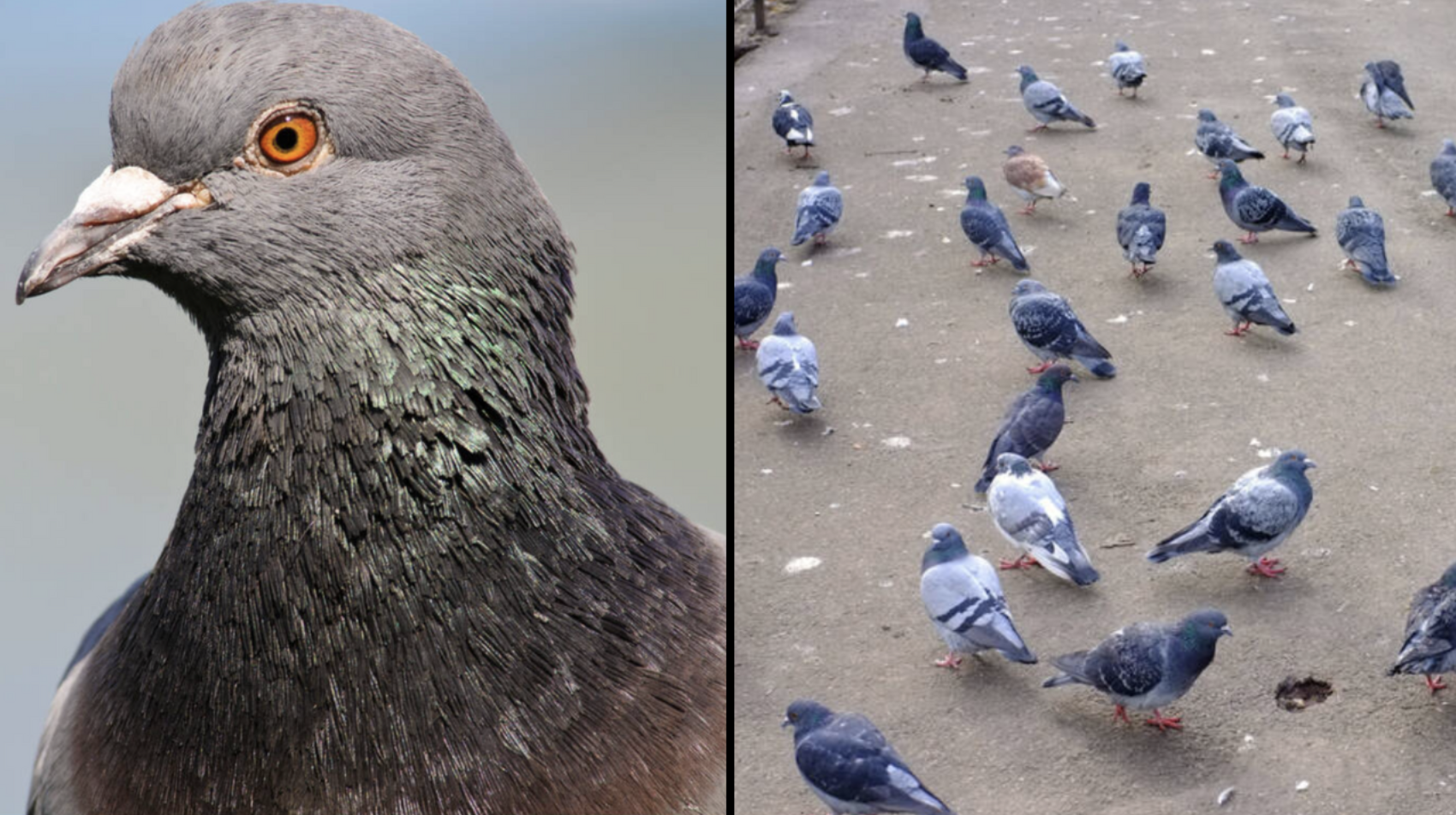
Credit: Alamy
Expert Solves Mystery Of Why We Never Seem To See Baby Pigeons
It may not be something you’ve ever thought of before, but have you ever wondered why we never see baby pigeons? Well, an expert has finally solved the mystery…
Pigeons, scientifically known as Columba livia, are songbirds that belong to the Order Passeriformes, more commonly known as ‘perching’ birds.
They are highly adaptable birds and can be found in urban areas worldwide.
They are especially populated in cities and towns where there is easy access to food, water, and shelter.
Due to their ability to thrive in human-altered environments, pigeons are commonly seen in parks, plazas, streets, and public squares.
But have you ever seen a baby pigeon? That’s a question that often pops up in people’s minds, but fear not, they haven’t disappeared into thin air.
Related Article: Expert Explains Why You Should Never Wipe More Than 3 Times After Pooping
Related Article: What Does A Bald Eagle Actually Sound Like?
These clever birds are often overlooked because most baby pigeons stay in their nests until they are fully feathered and resemble adult pigeons, and their nests are usually hidden on rooftops and high-rises, making them less visible to passersby.
It turns out these wriggling little songbirds are just biding their time in their nests until they grow up and take flight on their own.
According to Marc Devokaitis, the public information specialist at the Cornell Lab of Ornithology in New York, it’s fascinating why folks wonder about the absence of baby pigeons while not asking the same about other birds, as per Live Science.
He explains that most baby songbirds, which belong to the Order Passeriformes or ‘perching’ birds, remain in their nests until they are fully feathered and reach the size of their adult counterparts.
But let’s give a fair shake to these baby rock pigeons for their rare sightings.
There are a few reasons why we don’t catch them often.
Firstly, their nests are cleverly tucked away from view, often perched on rooftops and other skyscraping spots like bridges and high-rises.

Secondly, pigeon nestlings stay in the nest longer than other birds.
And finally, these pigeon babies mature at a faster pace when it comes to appearance, which might make them harder to distinguish from adults.
Before human-made cliffs and canyons became typical features of modern cities, wild rock pigeons used to inhabit caves and rocky crevices in montane or coastal cliffs, explains Devokaitis.
However, nowadays, any flat and sheltered surface works just as fine for their nests.
Even if these fledging pigeons do venture out of their nests, they would still be out of sight for those passing by on the ground.
Unlike other songbirds, whose nests are not as elevated, pigeon babies might not be spotted on the ground or perched on a bush shortly after they leave the nest.
Pigeon youngsters, in a way, get a bit of pampering compared to their fellow songbirds.
While most of their avian peers spend two to three weeks in the nest, pigeons get to enjoy the comforts of their mother’s quarters for at least three weeks and sometimes even up to six weeks, as Devokaitis explains.
Related Article: Expert Warns You Should Never Wee ‘Just In Case’ Before Leaving The House
Related Article: What Is Phubbing? Parents Warned About Taking Part In Trend In Front Of Their Kids
By the time these juvenile pigeons leave the nest, they bear a striking resemblance to the adults, which might explain why they’re not as easily identified as baby birds.
But fear not, keen observers can still spot these little ones if they keep a watchful eye.
Look for feathers that haven’t been fully moulted, dark eyes (adult pigeons have red-orange eyes), and tapered primary feathers, which are the longest feathers on the bird’s wing, advises Devokaitis.
So, the next time you wonder about the mysterious case of the missing baby pigeons, just know they are well-hidden, growing and preparing to take flight in due time.